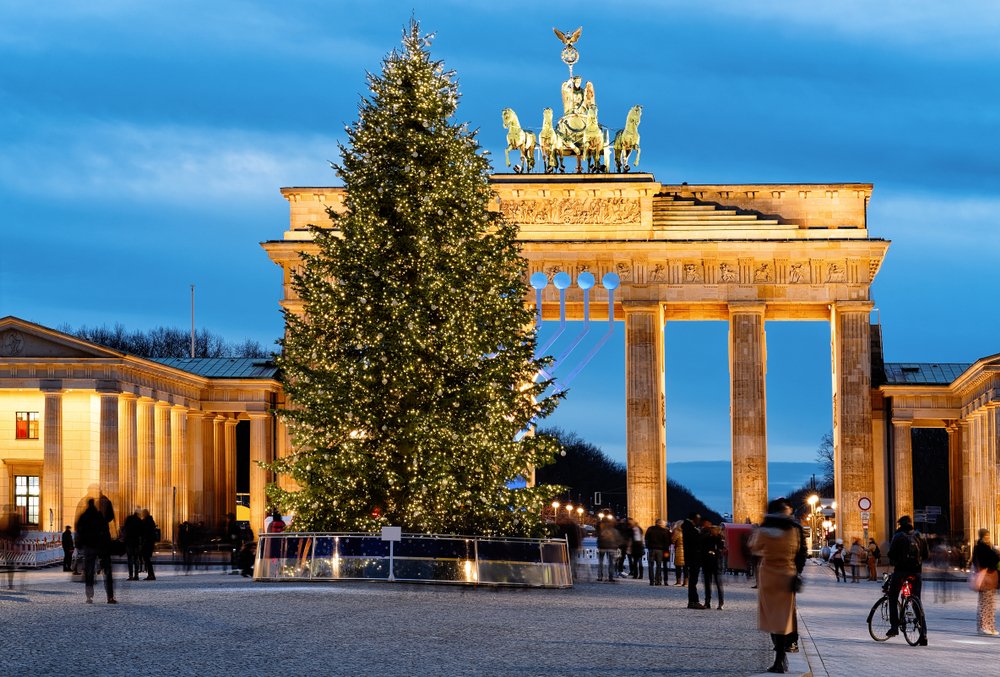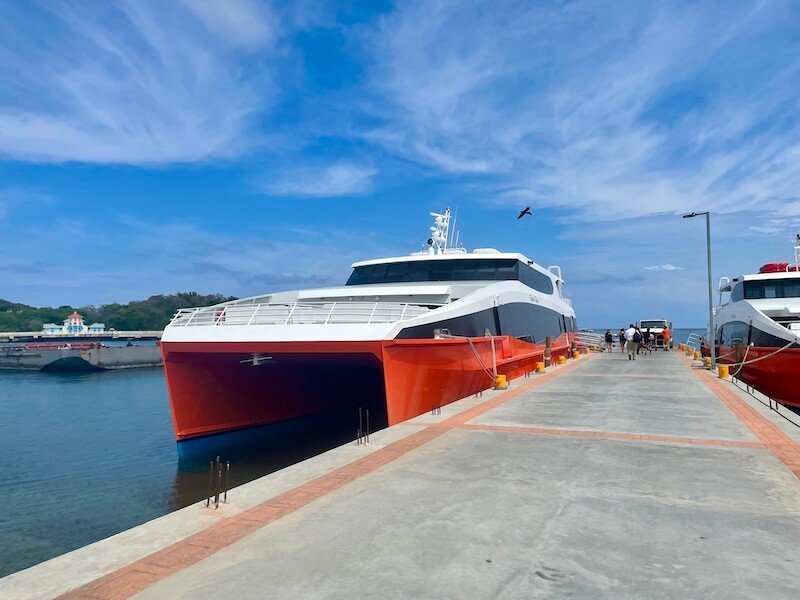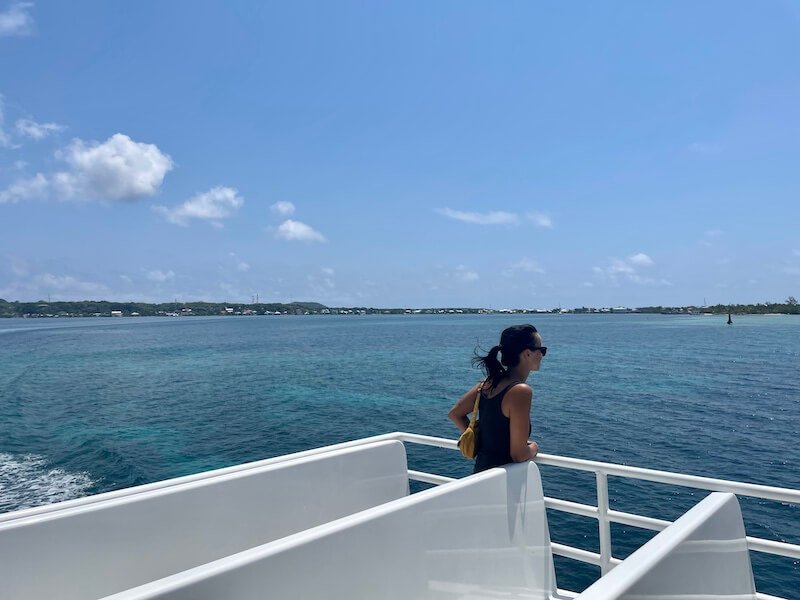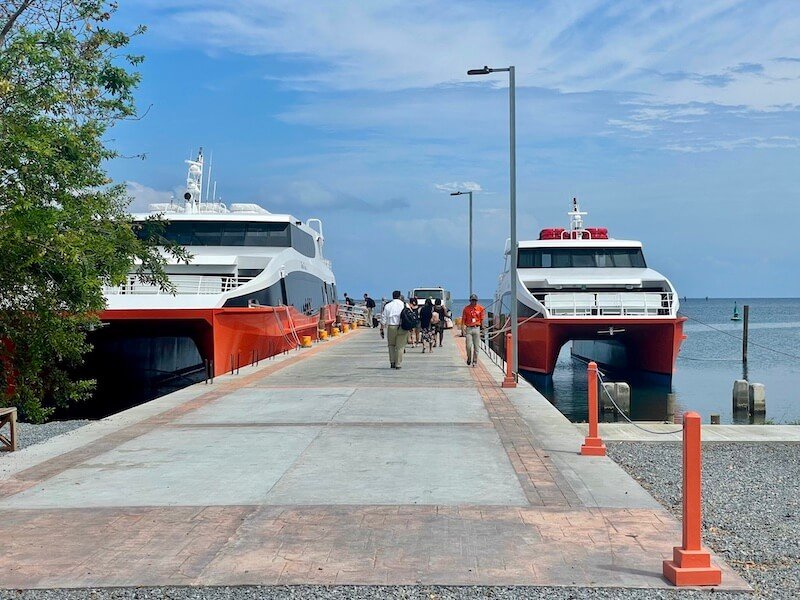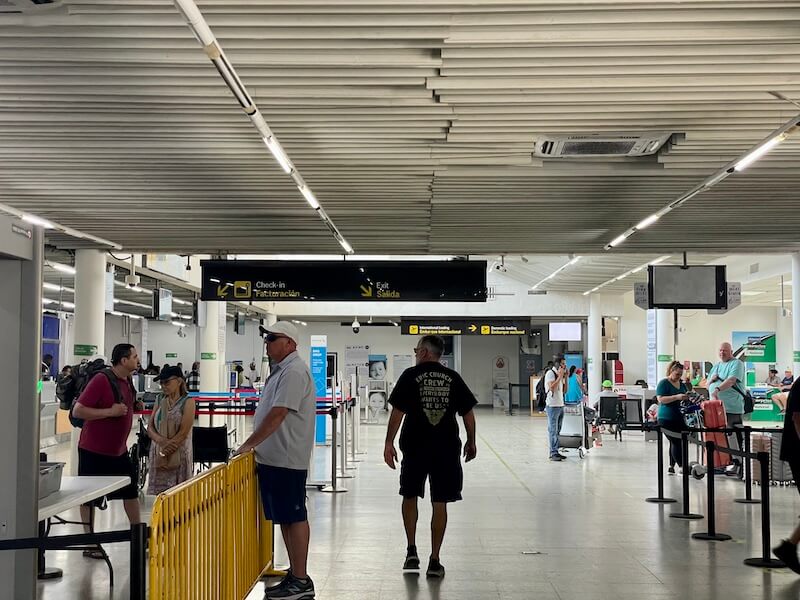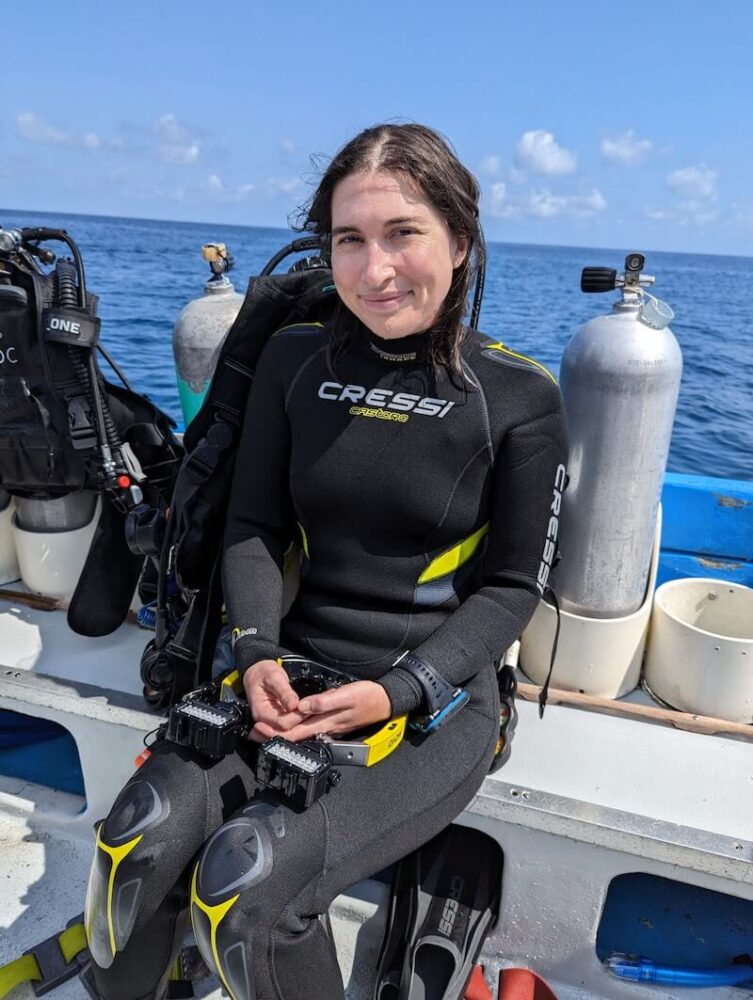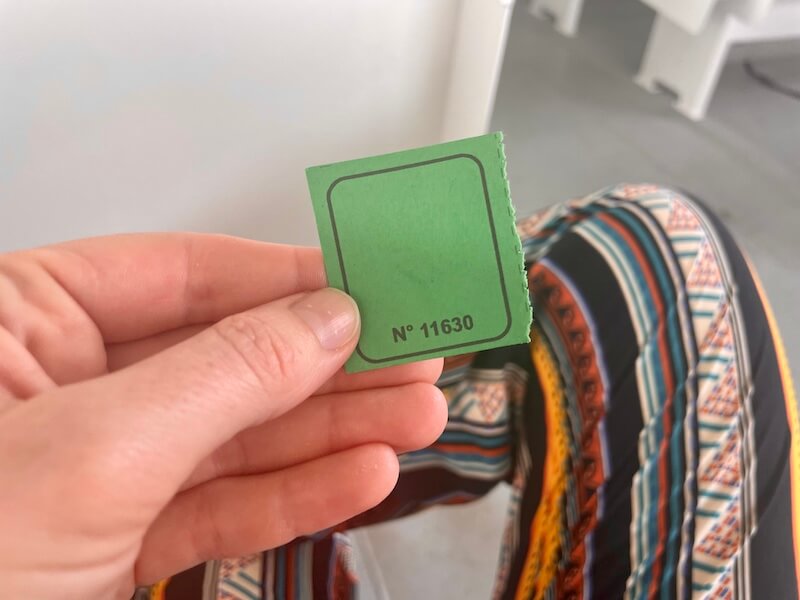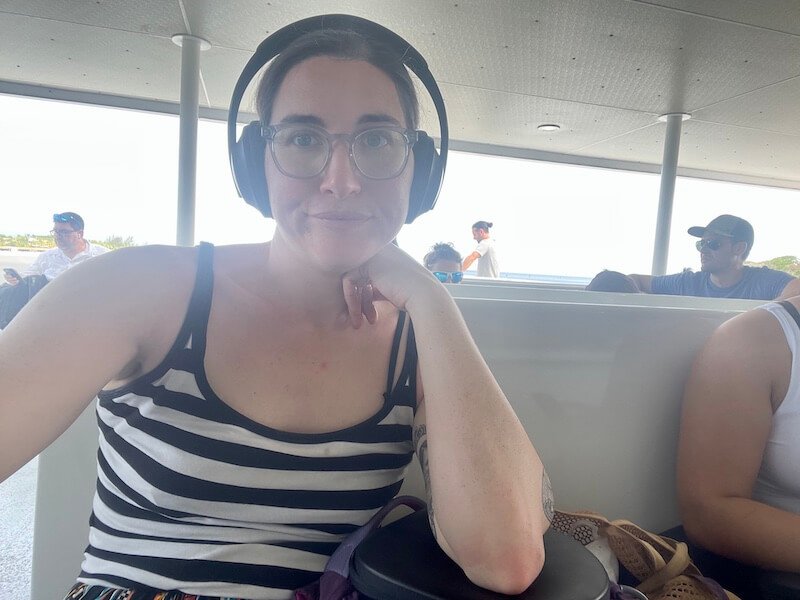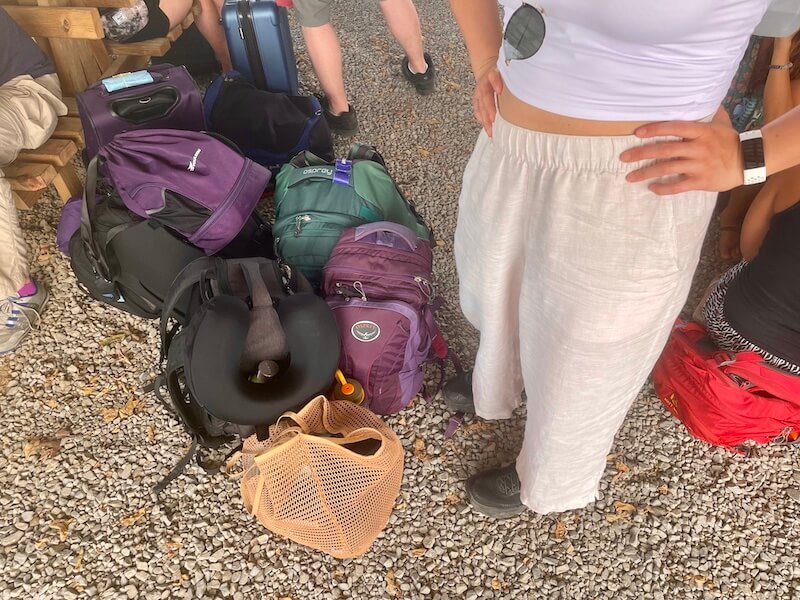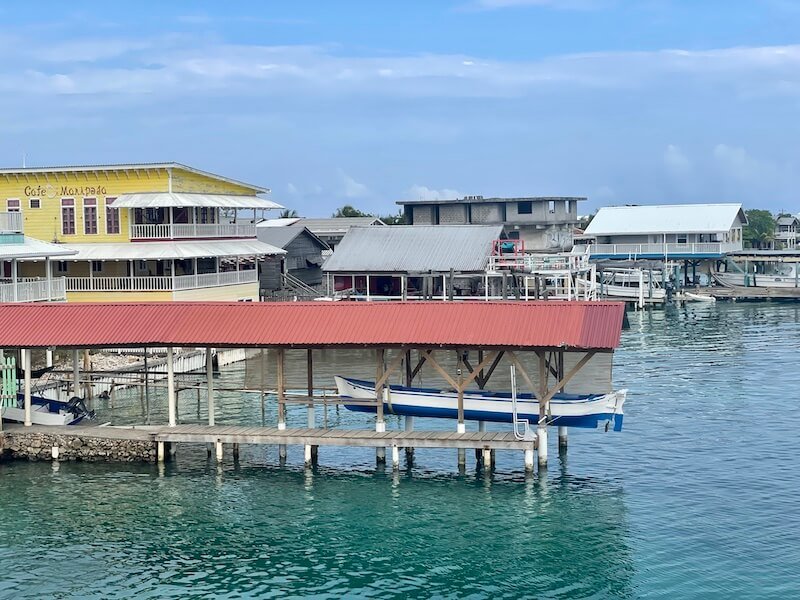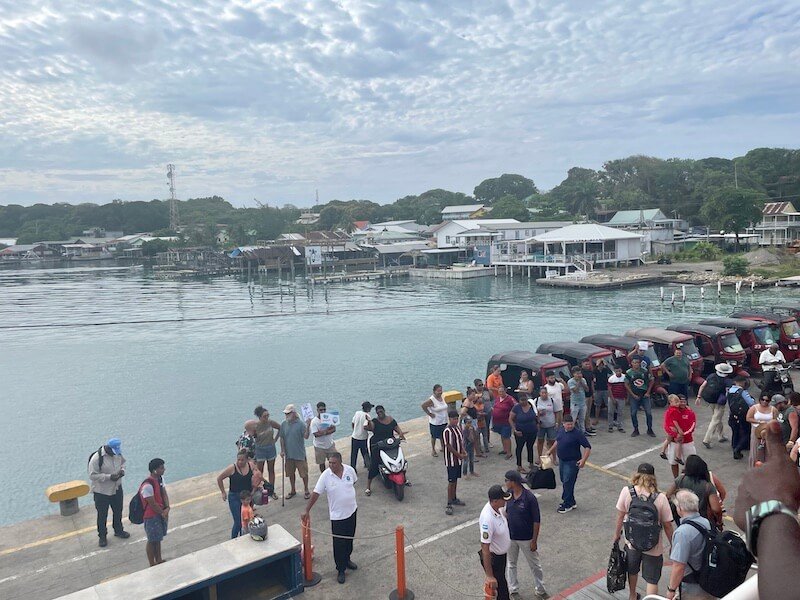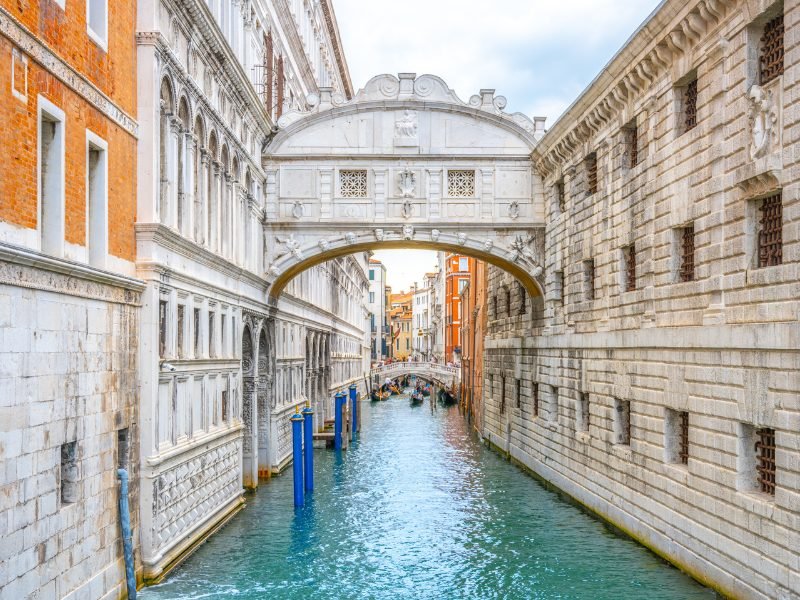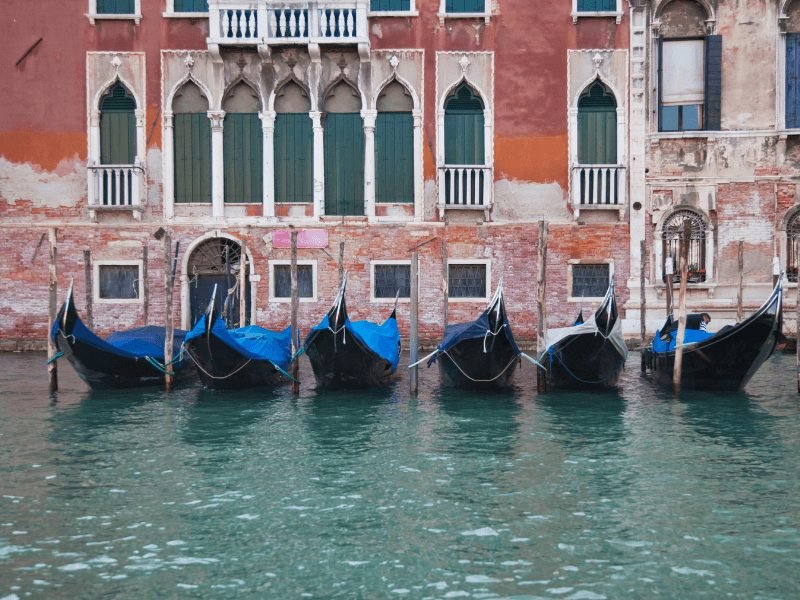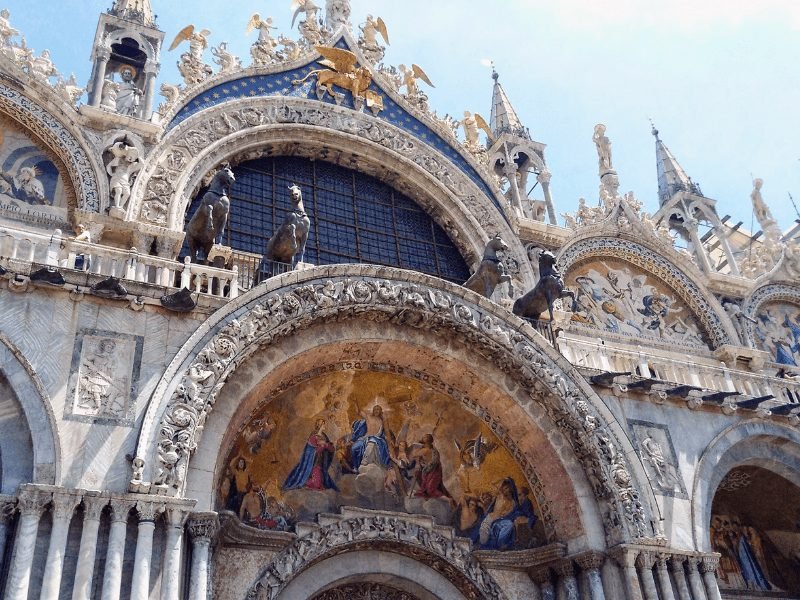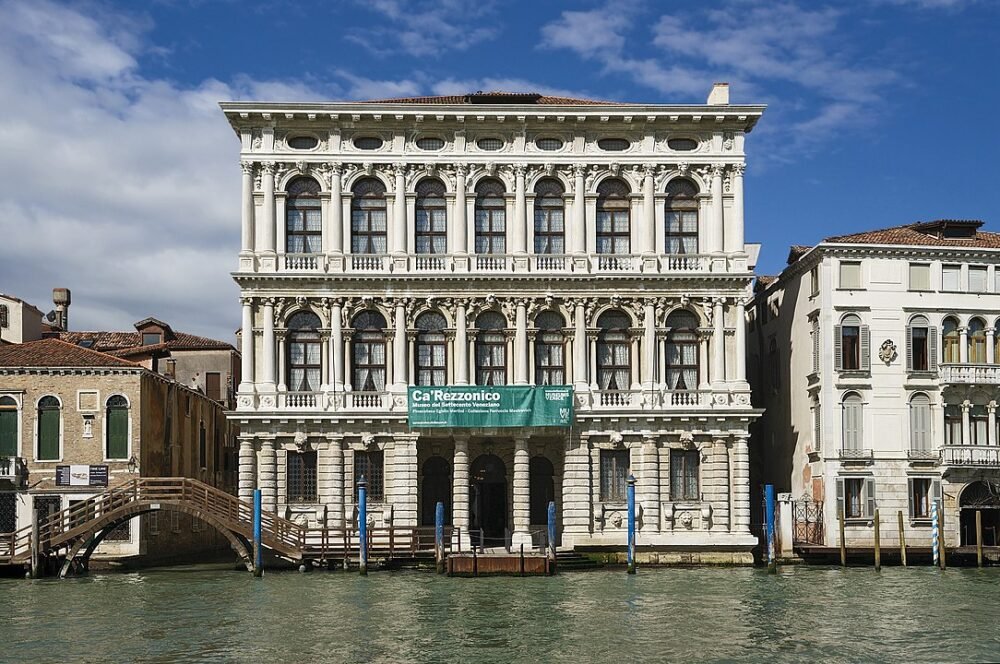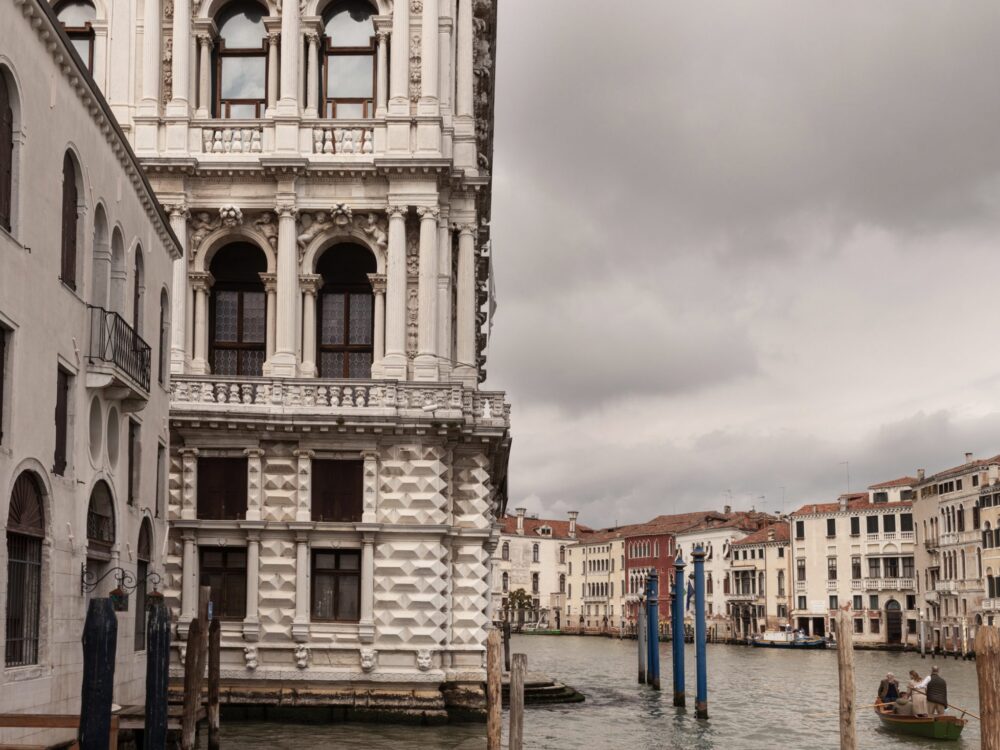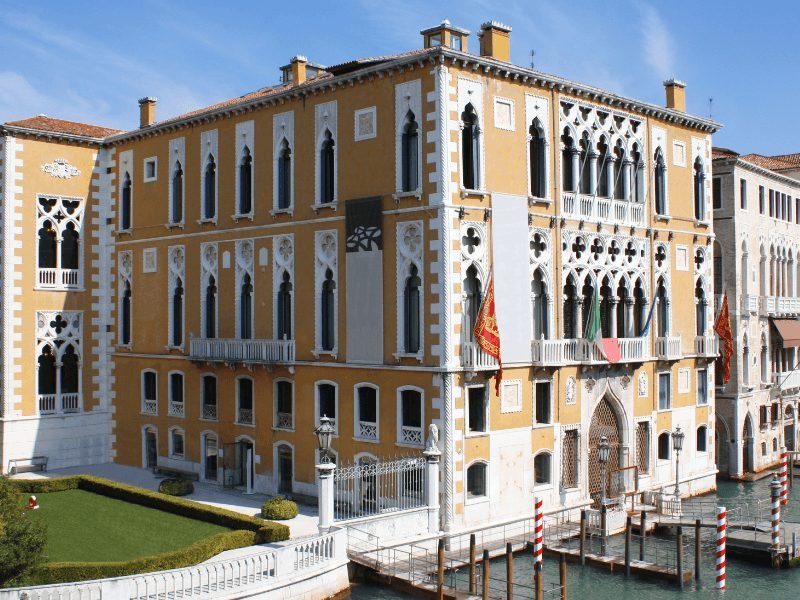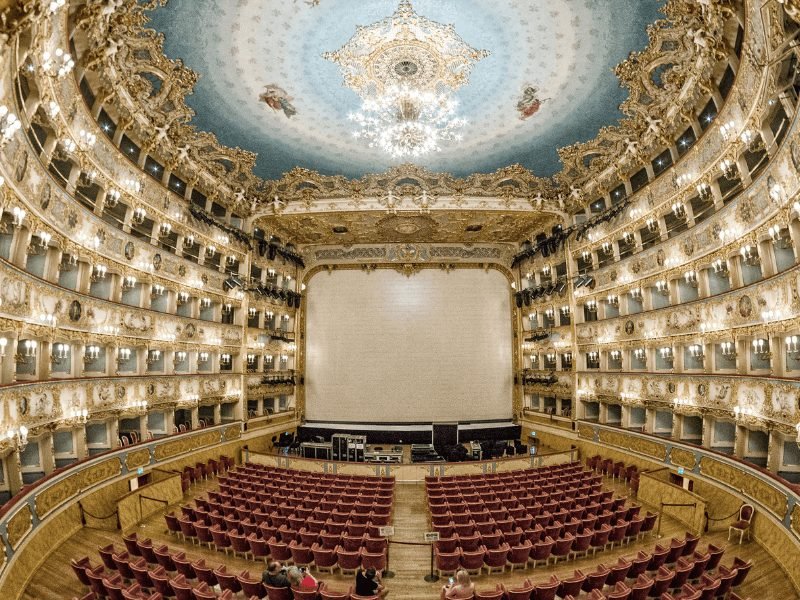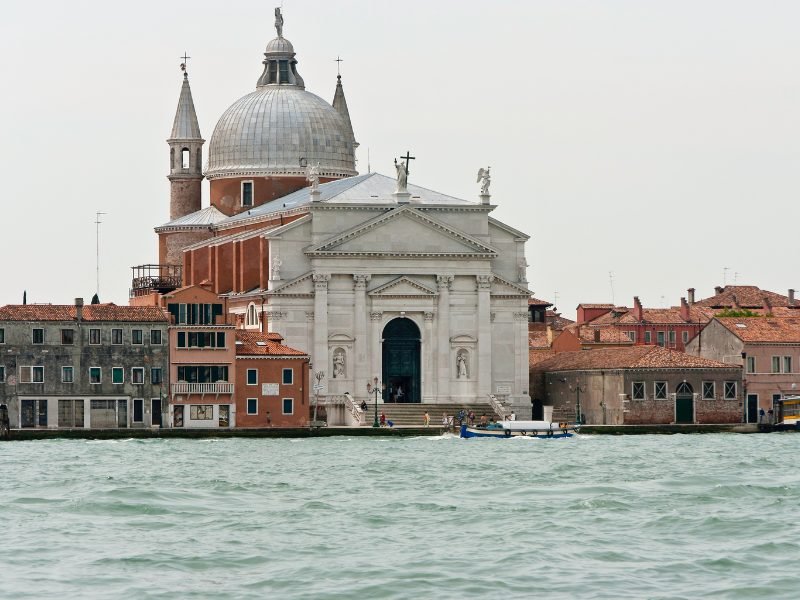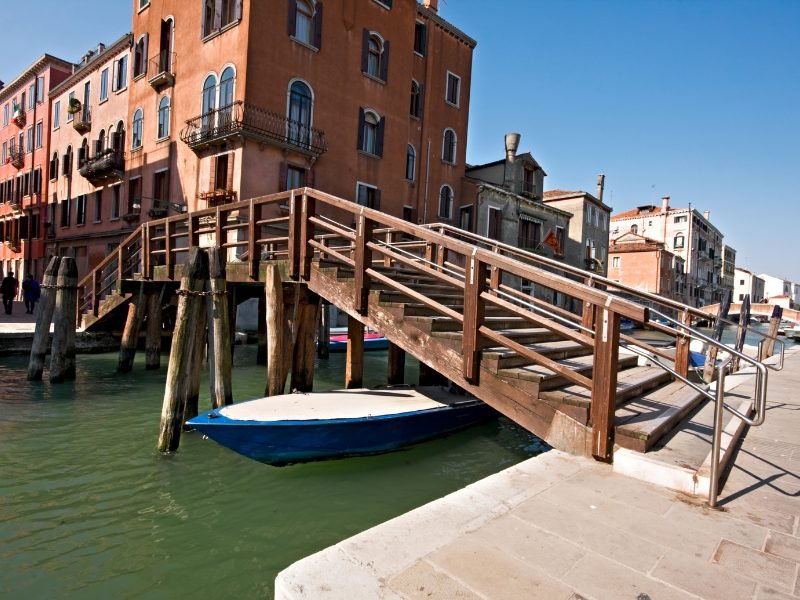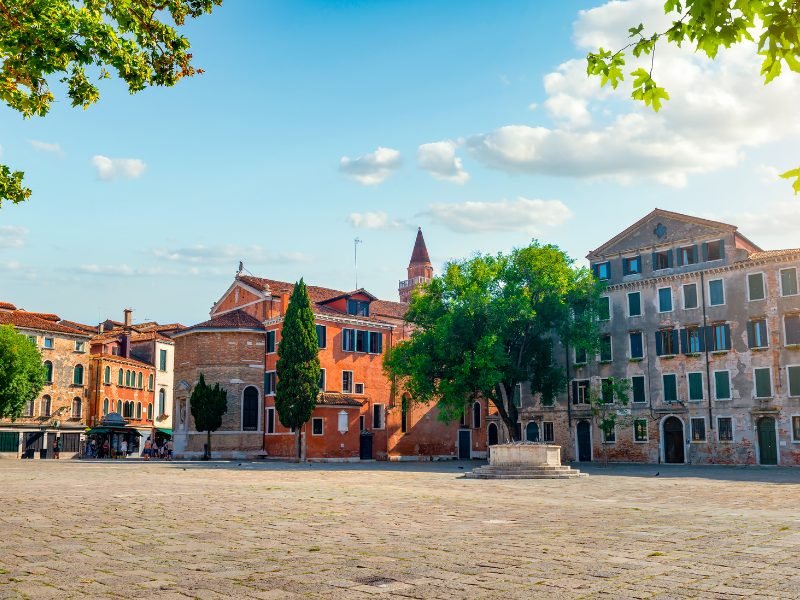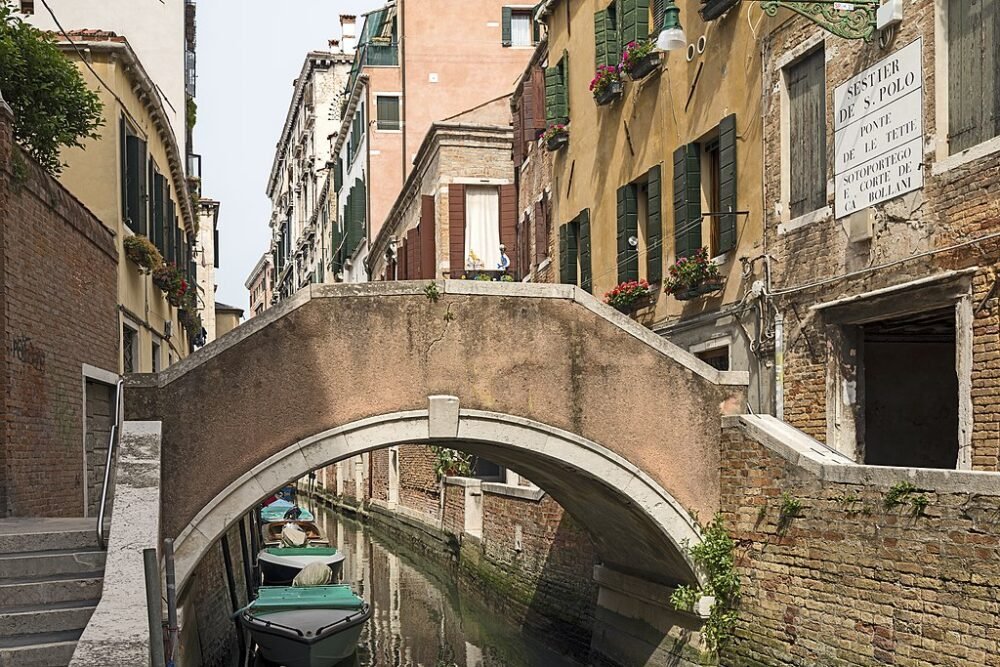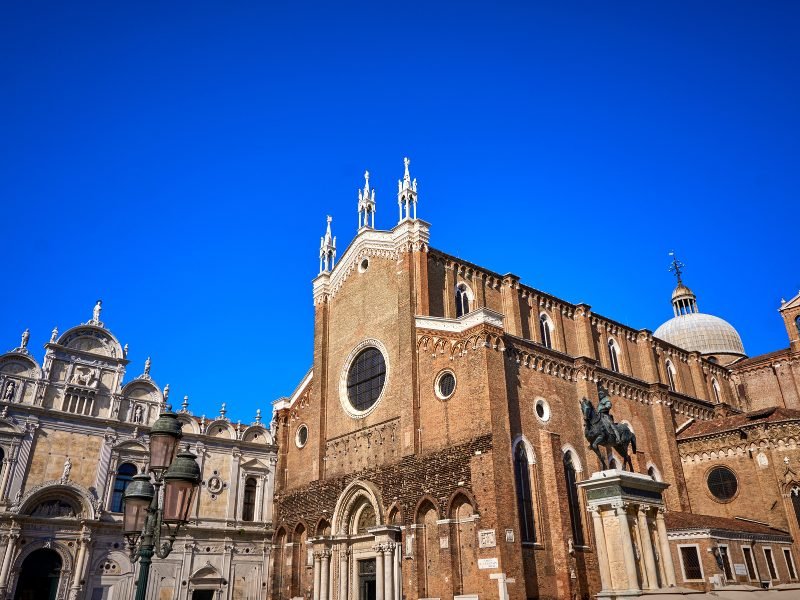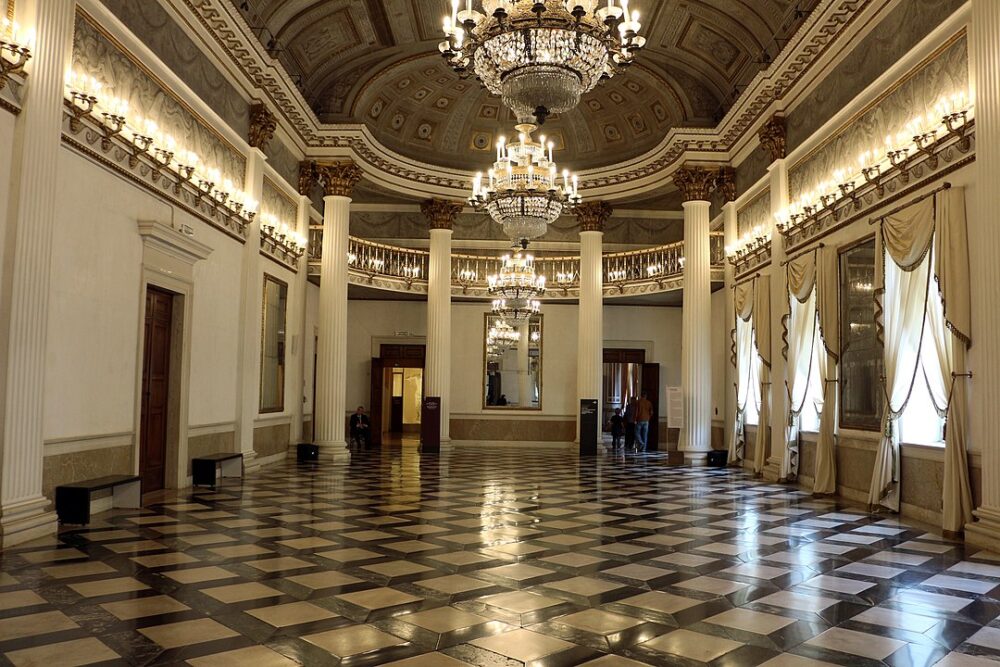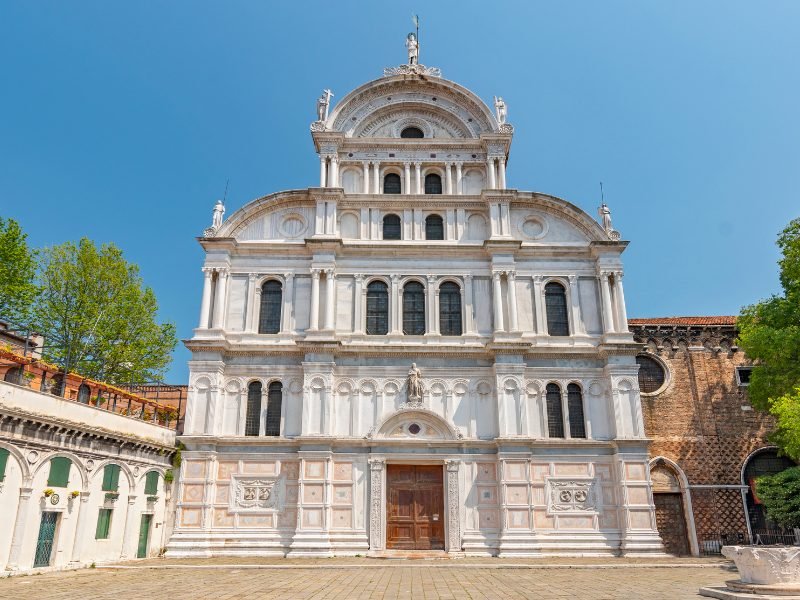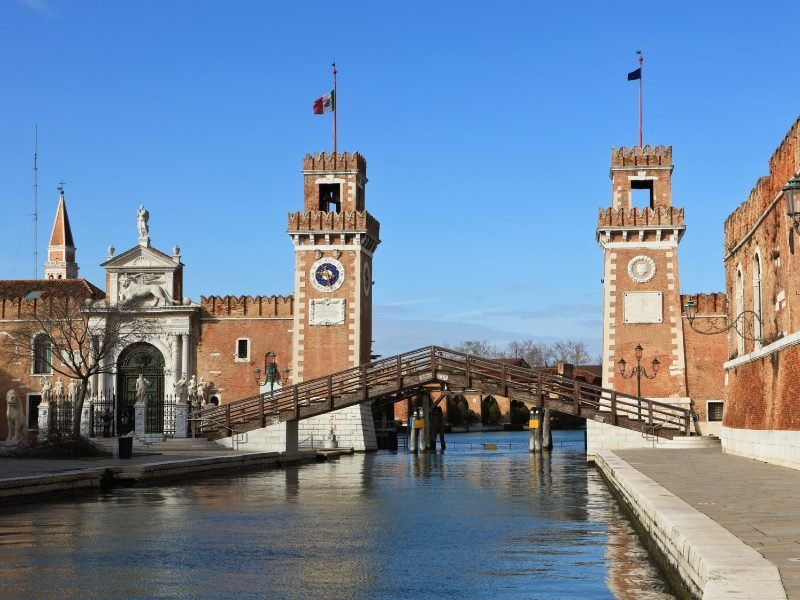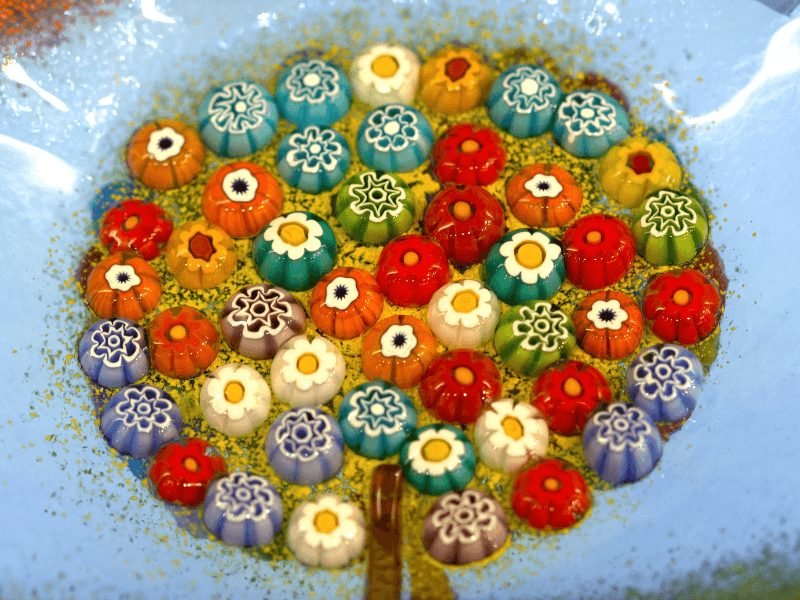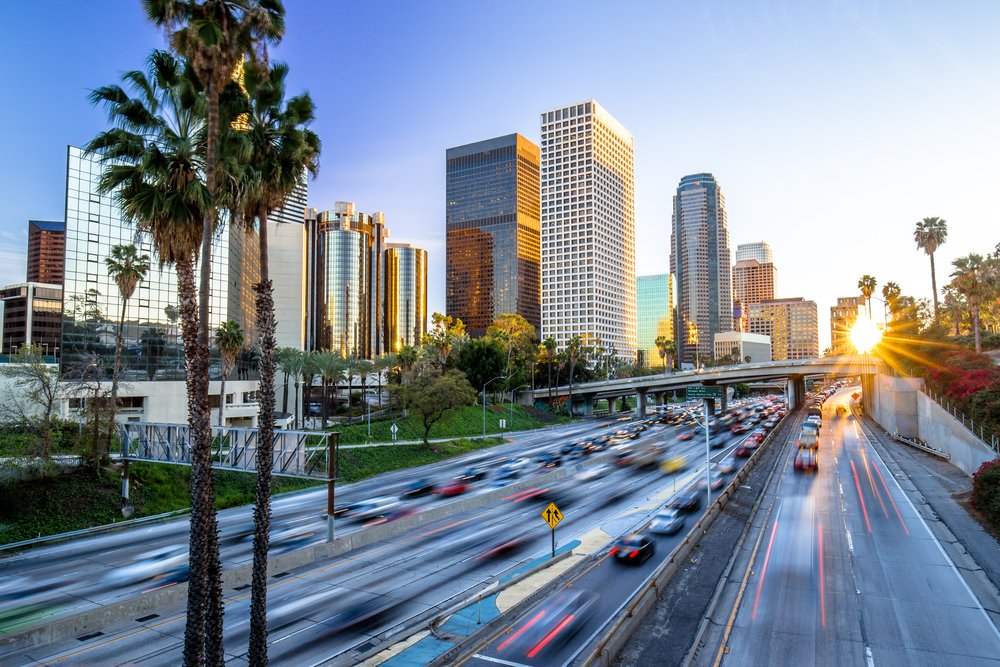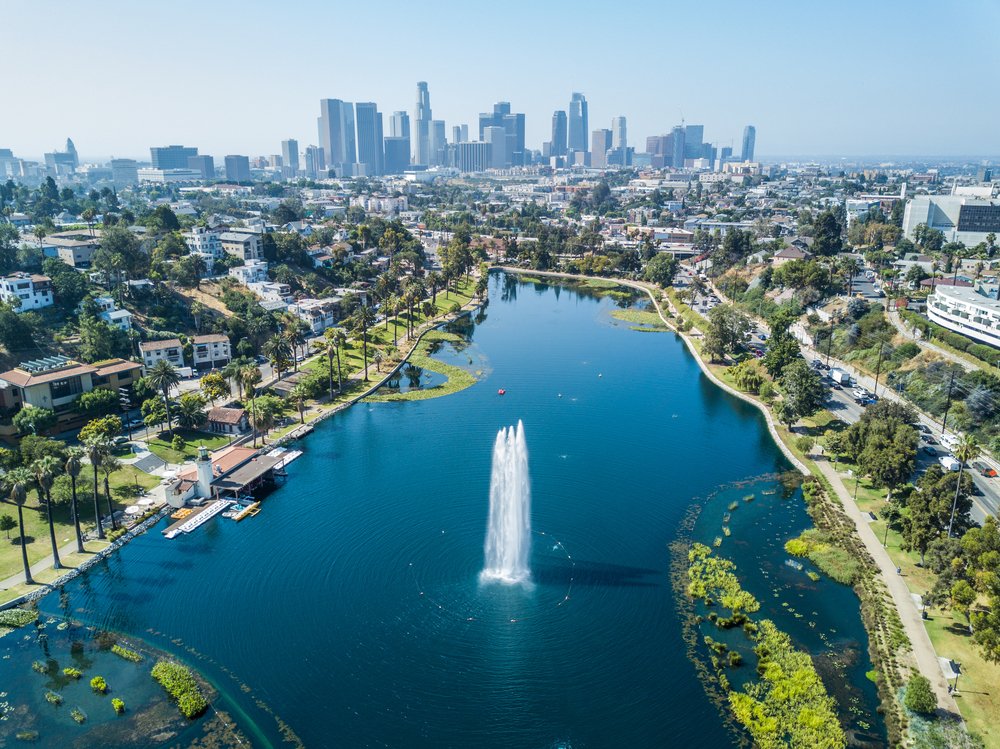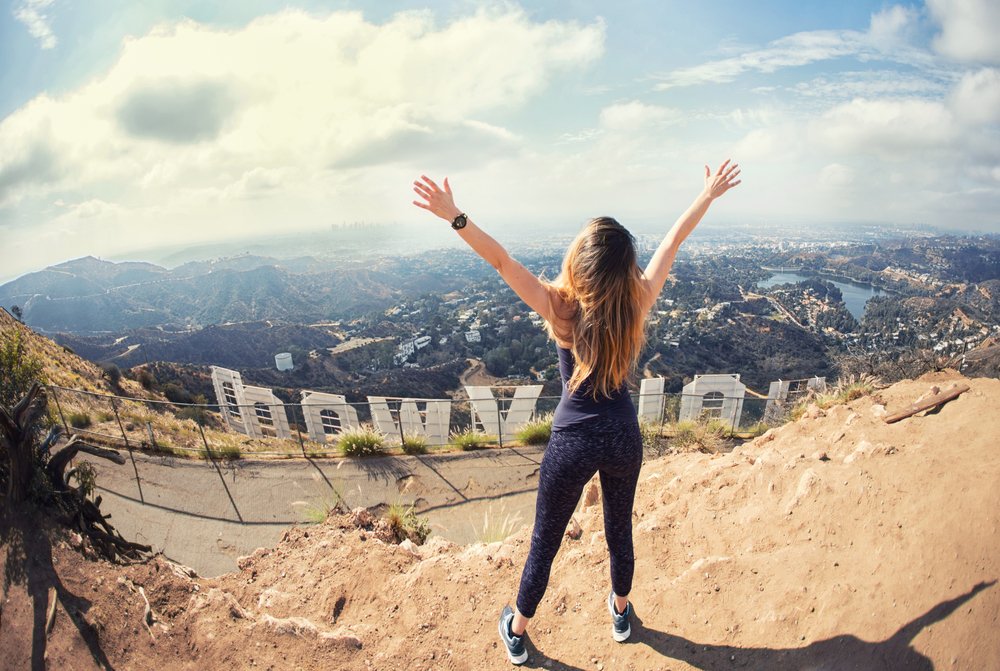Germany’s most international city, Berlin, is the perfect destination any time of the year — but we especially love Berlin in winter.
Home to stunning museums, impressive landmarks, vibrant nightlife, and an endless choice of international restaurants, Berlin is a buzzing city with something for every traveler’s taste.
While it’s true that the winter weather in Berlin can be harsh, the city offers plenty of indoor attractions, with enough to last you for weeks!
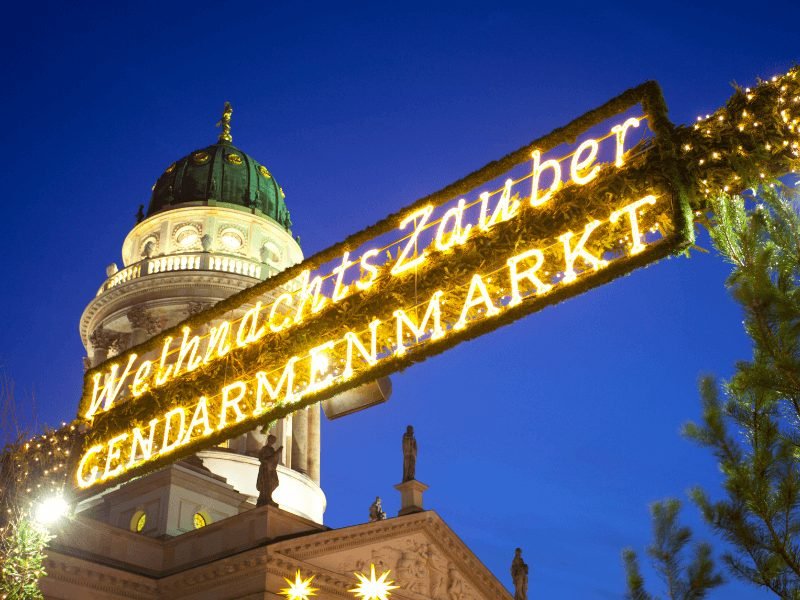
I lived in Berlin for nearly a year, including spending a full winter in Berlin, so I got to experience everything the city has to offer in the cold season.
From charming Christmas markets and stunning museums to a nearly endless choice of bars, restaurants, and cafés, I’ve put together a list of attractions and activities to try in Berlin during winter.
This way, you won’t waste a minute of your vacation, even if the weather is not ideal.
The Best Things to Do in Berlin in Winter
Check out Berlin’s adorable Christmas markets.
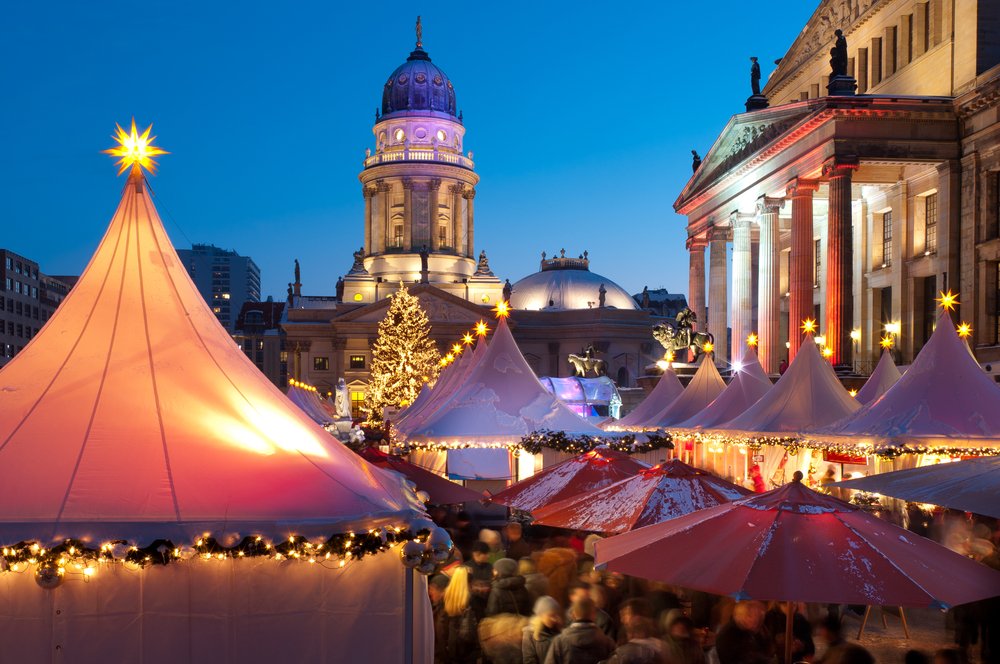
Planning to visit Berlin in late November through the beginning of January? You’re in luck, because that’s Christmas market season in the city!
And it isn’t winter in Berlin without visiting the many Christmas markets (Weihnachtsmarkt) spread across the city.
Christmas markets are a cherished tradition throughout Germany, and Berlin is no exception — even if the city is one of Germany’s most modern and edgy cities, it does melt around the edges at Christmastime!
You’ll find many Christmas markets all over Berlin, from the iconic one at Charlottenburg Palace to the Gendarmenmarkt one, one of the largest and most popular.
If you want to get away from the more crowded tourist-filled places, check out the Christmas market at Kulturbrauerei in Prenzlauer Berg.
Berlin’s Christmas markets are perfect for enjoying the holiday atmosphere, drinking mulled wine (glühwein), eating local foods like currywurst, and buying handmade gifts.
Fun Tip: Don’t forget to collect the customized mulled wine mugs! Each market has its own decorated Christmas mug that changes every year.
Warm up in Berlin’s cutest cafés.
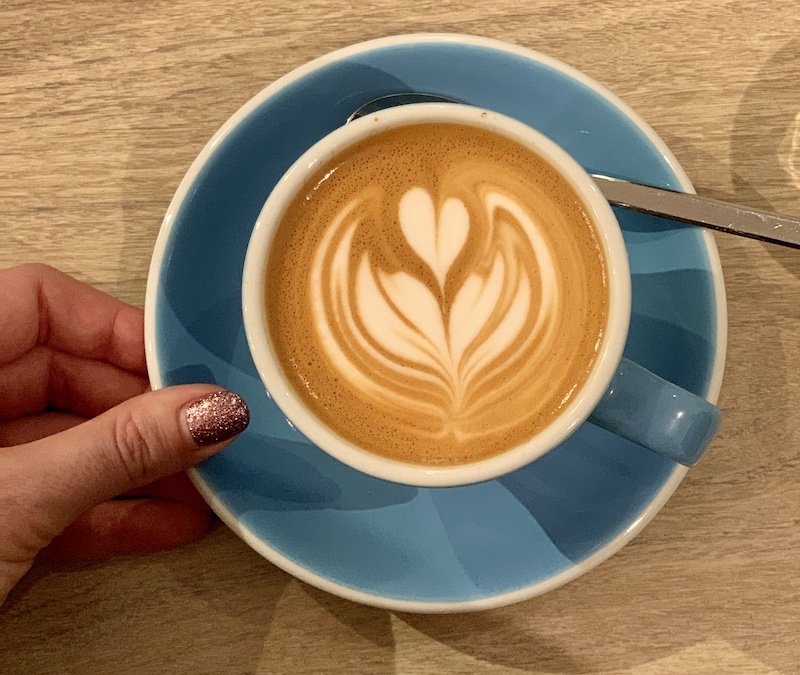
A perfect way to stay warm in the Berlin winter is to hide inside a trendy café and enjoy a warm drink with a slice of cake (after all, Germany does cake better than almost anyone!).
Berlin has many cozy cafés where you can spend a few hours on a cold winter afternoon.
Betty’n’Caty is a great option if you’re staying near Prenzlauer Berg, while Café Dreikäsehoch is the perfect spot for coffee and cheesecake in Charlottenburg.
In the city center, you’ll find many specialty coffee shops like Refinery High End Coffee or Coffee Lab Kaiserhöfe, serving up expertly-crafted third wave coffee.
Berlin is also famous for its many vegan and vegetarian options, so if you’re in the mood for delicious vegan cake, head to Cafe Neundrei.
Regardless of the area of Berlin, you’ll find several cafés, from international chains to cozy, local spots, all inviting you to take a seat and warm up!
Enjoy the view from Fernsehturm.

Few places are as representative of Berlin as the iconic Fernsehturm, the tall television tower in Alexanderplatz.
At 368 meters (more than 1,200 feet) high, the TV tower is among the tallest buildings in Europe — and of course, it offers some incredible 360-degree views of Berlin and its surroundings.
The tower is open daily, and the entry ticket allows you to spend as much time as you want at the top.
Walk around the viewing gallery to spot some of Berlin’s most iconic landmarks and maybe stop for lunch or dinner at the revolving restaurant.
You won’t find a restaurant in Berlin that offers a better view!
The Fernsehturm perhaps the most popular attraction in Berlin, so buying entry tickets in advance is highly recommended.
You may also want to avoid the weekends if you don’t enjoy big crowds.
If you want to be sure you get a window seat at the restaurant, book this TV Tower Fast-Track Ticket & Window Seat Reservation.
Tour the Reichstag.

A tour of the Parliament, or Reichstag, is a must when visiting the city, even better in winter in Berlin, when the weather is not ideal to stroll around town.
The unique structure combines the historical neo-Renaissance building with the modern walk-in glass dome, offering stunning city views.
The Reichstag is open daily, and you can organize your visit by yourself by registering on the official German website here.
However, if you’re looking to learn more about the impressive landmark, join a guided tour like this Plenary Chamber, Dome & Government District Tour.
Joining a guided tour is probably the best option since it includes the dome visit, which requires prior registration on the German website.
Given the popularity of the Reichstag, you should buy your tickets in advance.
Visit a wintery Berliner Dom.
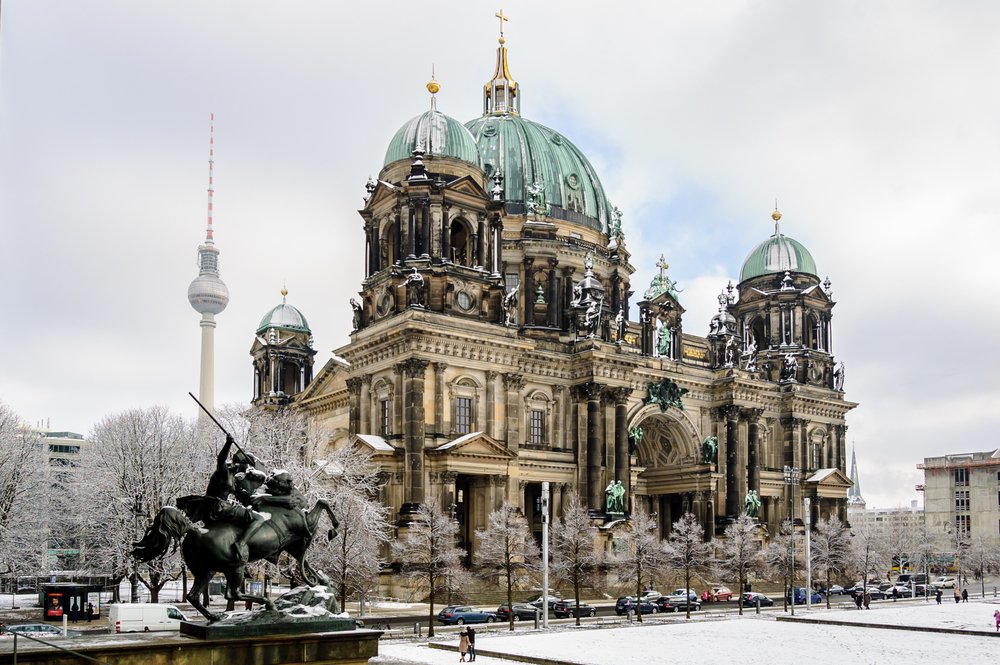
Also located on Museum Island, the Berliner Dom is a gorgeous cathedral right in the heart of the German capital.
With its Neo-Renaissance and Baroque inspired design (since it was actually constructed in 1905), plus its gorgeously-crafted mosaics on the inside, it’s an absolute must-see.
Plus, if you’re in Berlin in winter, stepping inside the cathedral has the added benefit of being a great way to escape the cold!
A visit to the Berliner Dom includes access to the cathedral’s interior, the Hohenzollern crypt, and maybe the best of all — the panoramic view from the dome!
Do be aware that you’ll need to buy your tickets online, as you can’t pay for them on-site.
During the Christmas period, they also occasionally host organ concerts for Advent.
Shop ’til you drop on Ku’damm.
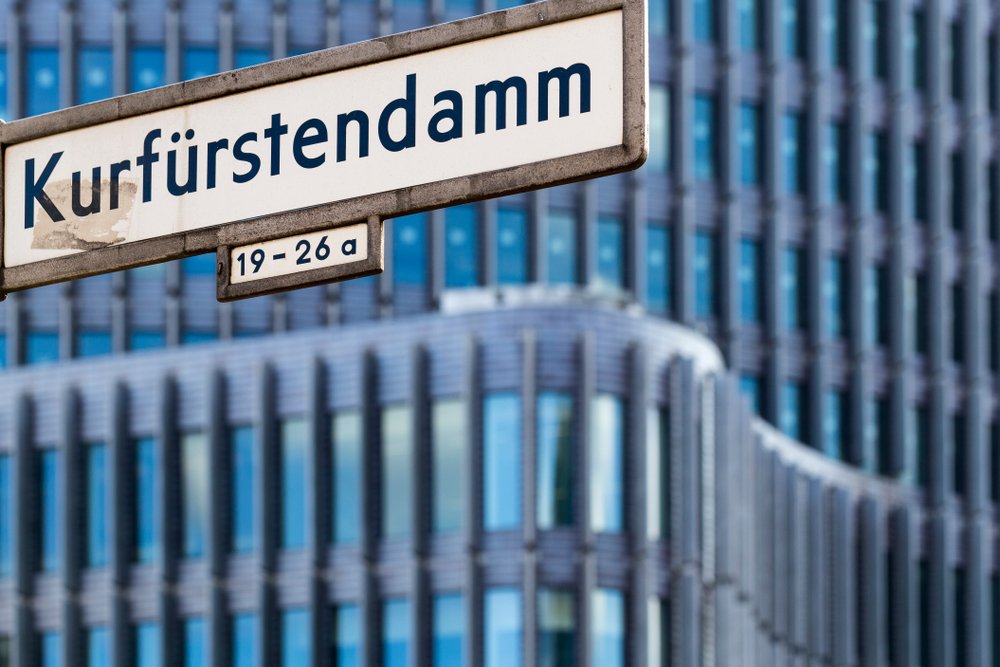
Berlin’s Ku’Damm (short for Kurfürstendamm) is the city’s Champs-Elysees: a long, bustling boulevard that’s hotspot for fashion and luxury.
In the winter, it’s transformed into a twinkling winter wonderland, adorned with holiday lights and festive decorations.
There are some fun places to shop in Ku’Damm, like BIKINI BERLIN (though it may seem off-season for that!), which is a hipster concept mall with boutiques and designers alike.
And while you’ll find all the big designers like Chanel, Gucci, Louis Vuitton, and Prada, you’ll also find some smaller German classics, like the adorable Steiff toy store (known for its teddy bears) and some smaller pop-up Christmas market stalls.
Visit the Berlin Christmas Garden.
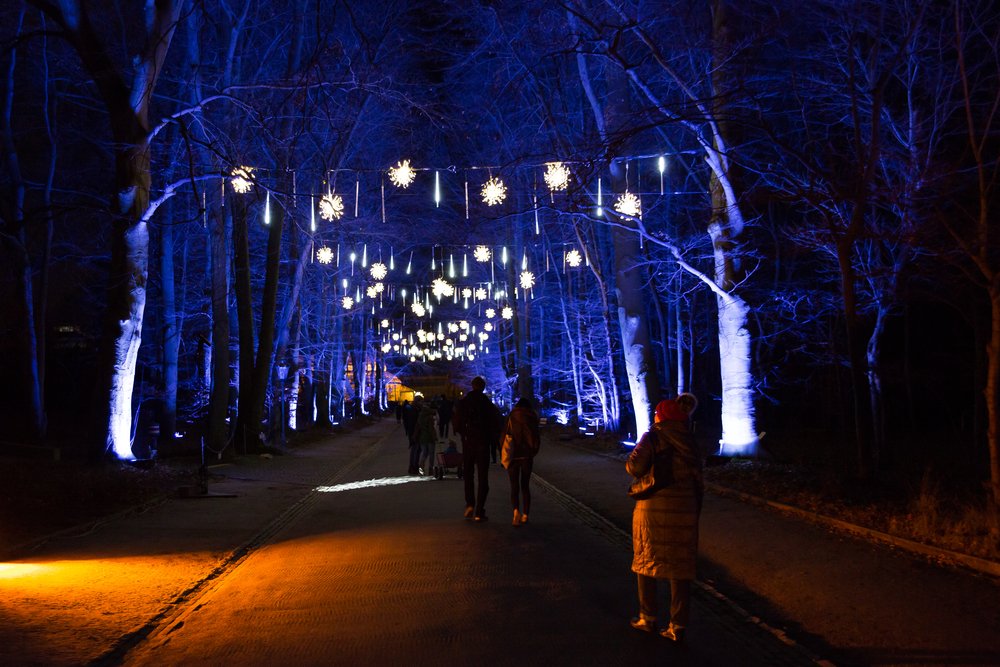
The magical Christmas atmosphere encompasses everything in Berlin, from its main squares to unique places like the Berlin Botanical Gardens.
The gardens transform into a true winter wonderland, with decorations, light installations, and thousands of fairy lights illuminating the pathways and plants.
Aside from strolling around the magical gardens, you can enjoy snacks and drinks from the many stands and even attend special events like concerts or performances.
The Christmas Garden, as it’s called during this time of year, usually opens from mid-November to mid-January.
The opening dates and times do vary from year to year, so check the Christmas Garden website for updates — and buy those tickets ahead of time to avoid disappointment!
Warm up checking out the museums of Museuminsel.
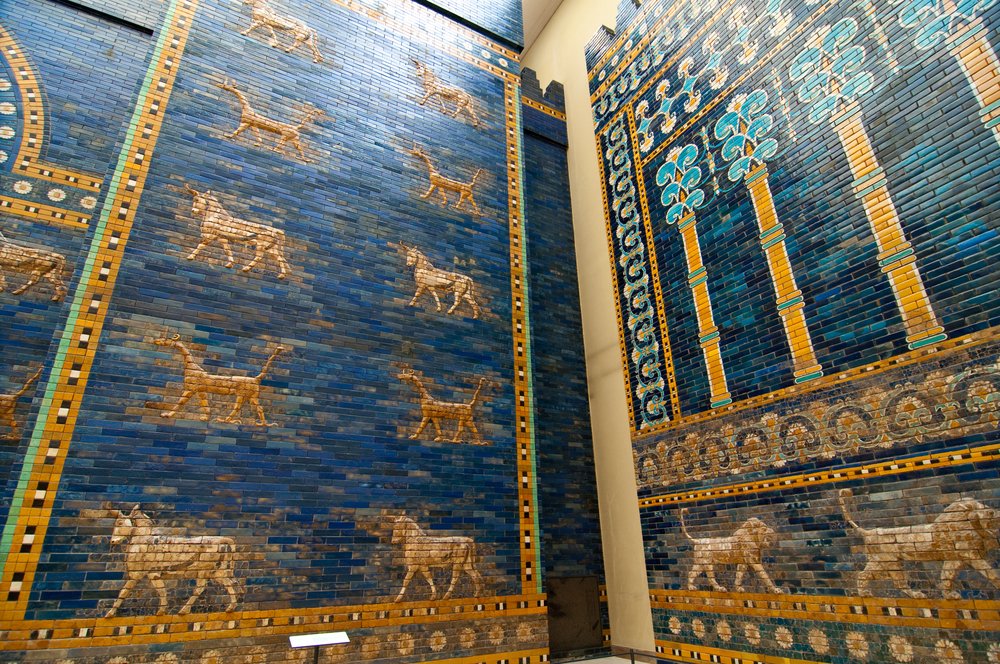
As you can imagine, Berlin can get quite cold in winter — but luckily, there’s plenty to do indoors when the weather is not your friend!
If you’re a fan of visiting museums while you travel, Berlin will spoil you, with countless museums to visit for everything from history to art museums and more.
Berlin’s Museum Island (Museuminsel) is a UNESCO World Heritage Site, and one of the best spots for a cultural visit, as it’s home to five of the city’s best museums — all in one central spot!
If I had to narrow it down from the five, I’d say the two must-see museums on Museum Island are the Pergamon Museum and the Neues Museum.
The former houses an impressive collection of ancient artifacts, and the Neues Museum, not so true to its ‘new’ moniker, is home to a collection of Egyptian art and artifacts.
Save time, skip the line! You can book your tickets to the Pergamon Museum online here to skip the line, as well as tickets for the Neues Museum here.
Visit Berlin’s many other excellent museums.
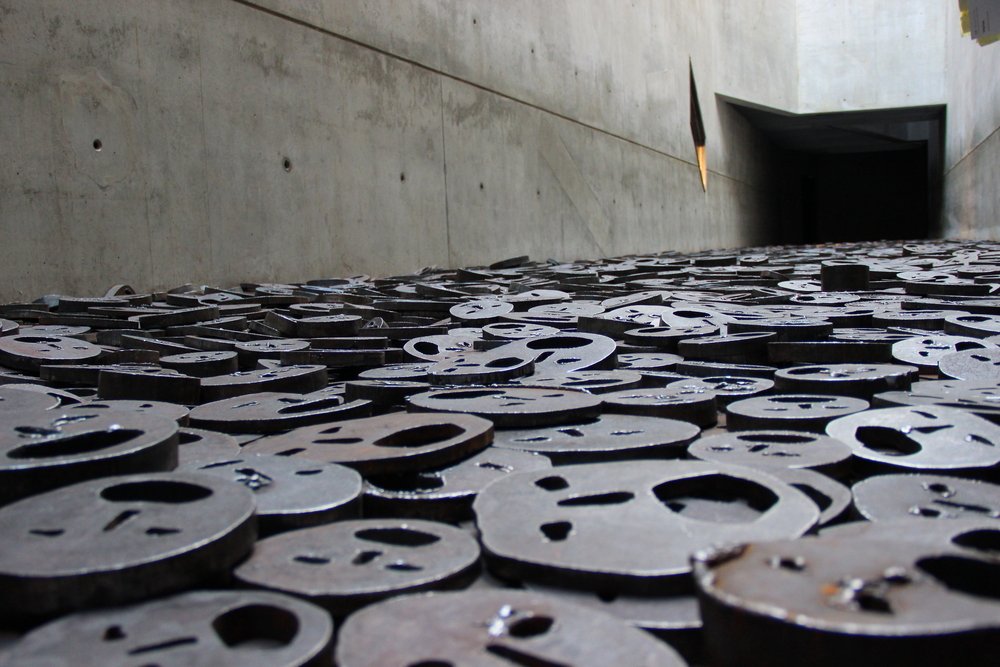
Outside of the Museum Island, there’s much more where that came from when it comes to museums in Berlin.
If you’re interested in Cold War era history, the DDR Museum is an interesting insight into displaying what life was like in East Germany while the Berlin Wall was up.
Meanwhile, the excellent Jewish Museum focuses on the long history of Jews in Germany — before, during, and after the Holocaust — and is the largest of its kind in Europe.
It’s a touching place to visit and a must-see on any Berlin itinerary.
Skip the line at these popular Berlin museums — buy your tickets to the DDR Museum here and the Jewish Museum here (free, but requires a reservation)!
Take a wintry stroll in Tiergarten.

You won’t want to spend all of your Berlin winter trip indoors, though: there are some lovely parks and outdoor spaces to enjoy, and even if it’s cold out, walking through Tiergarten is an absolute must-do when you’re in Berlin.
The city’s most popular park turns into a scene out of a Christmas storybook when it snows, but even if it’s not snowy out, it’s still a serene place for a winter walk, especially if one of its lakes like Neuer See is iced over!
Its lakeside cafe, Café am Neuen See, is a can’t-miss and a great place for a pit stop as you make your way through Tiergarten’s interesting sights.
There are its various memorials (like the Memorial to the Sinti and Roma Victims of National Socialism and the Memorial to Homosexuals Persecuted Under Nazism) which ponder and vow to not forget Germany’s tumultuous past.
Other sites worth seeing in Tiergarten include the lovely Schloss Bellevue, the Berlin Zoo, and the beautiful Victory Column, where you can climb to the top and enjoy an epic view of Tiergarten for a mere €4.
Bundle up and do a themed walking tour.
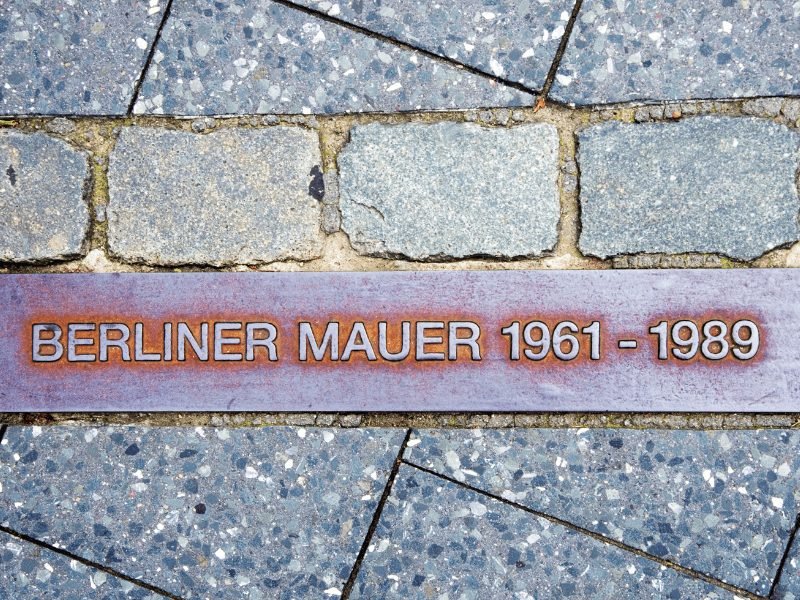
Like we said above, just because it’s cold in Berlin in winter doesn’t mean you shouldn’t get out and explore the city on foot!
There’s a ton of walking tours of the city that cover the history of Berlin from all sorts of angles, like this Third Reich and Cold War Walking Tour or this East Berlin and the Wall Walking Tour.
See Berlin’s most charming bridge in the snow.

Did you know Berlin has more bridges than Venice — an estimated 1,700 of them?
And yet, with that many bridges, it’s quite easy to narrow it down to Berlin’s most beautiful: Oberbaumbrücke, connecting the hip neighborhoods of Friedrichshain and Kreuzberg.
These two neighborhoods were once separated by the Berlin Wall, so the bridge in a sense is a symbol of Berlin’s unity once again.
Try a currywurst.

You really can’t say you’ve been to Berlin if you haven’t tried currywurst, no matter what time of year you visit!
Currywurst is a sliced up pork bratwurst that’s first steamed and then fried.
Then, it’s cut into bite-sized pieces and topped with ketchup and curry powder.
Typically served to-go on a little paper take-away tray with a tiny pick, it’s the quintessential Berlin street food, and a great way to grab a warm bite in the winter!
Most people say the best currywurst can be found in Prenzlauer Berg, with Konnopke’s Imbiss receiving lots of nods.
For a convenient option if you’re walking along Ku’Damm, don’t miss Bier’s Kudamm 195 in Charlottenburg.
Vegan? Don’t miss out on the fun! Have a vegan currywurst at Curry at the Wall Berlin.
Dance the night away into the next morning.
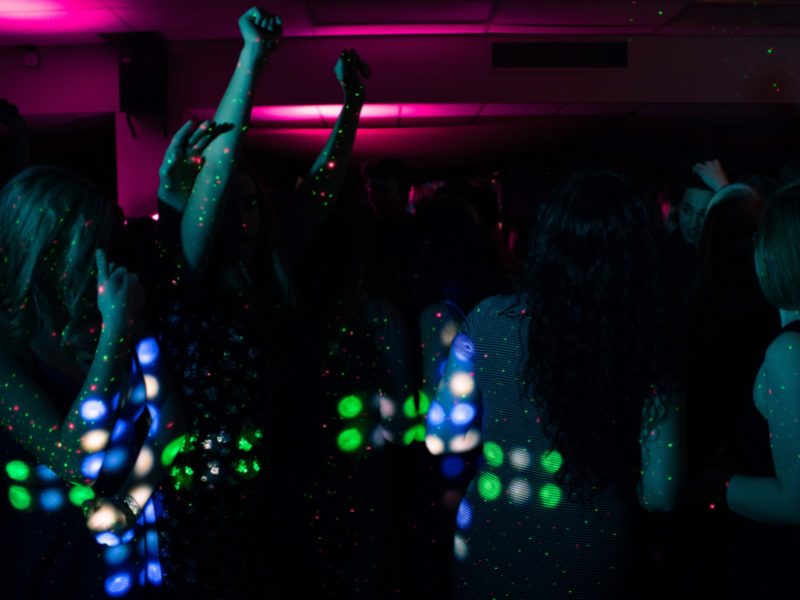
If you want to experience Berlin’s nightlife, prepare yourself for extreme partying.
The city is famous around the world for its party and music scene, so you’ll find several places to dance until morning.
Not just that, you can even find places where the party runs all weekend, like Sisyphos, where partying starts on Friday and ends on Monday morning.
If you’re into techno music, Berlin is the place to be.
Many clubs in the German capital are renowned for their wild techno parties, like the kink-positive KitKatClub or the world-famous, mega-exclusive Berghain.
The choice of nightclubs is varied, though, so you can find places with different music genres, like the alternative Cassiopeia or the popular Matrix Club, open every day of the week.
Have a more low-key night out with a few drinks.
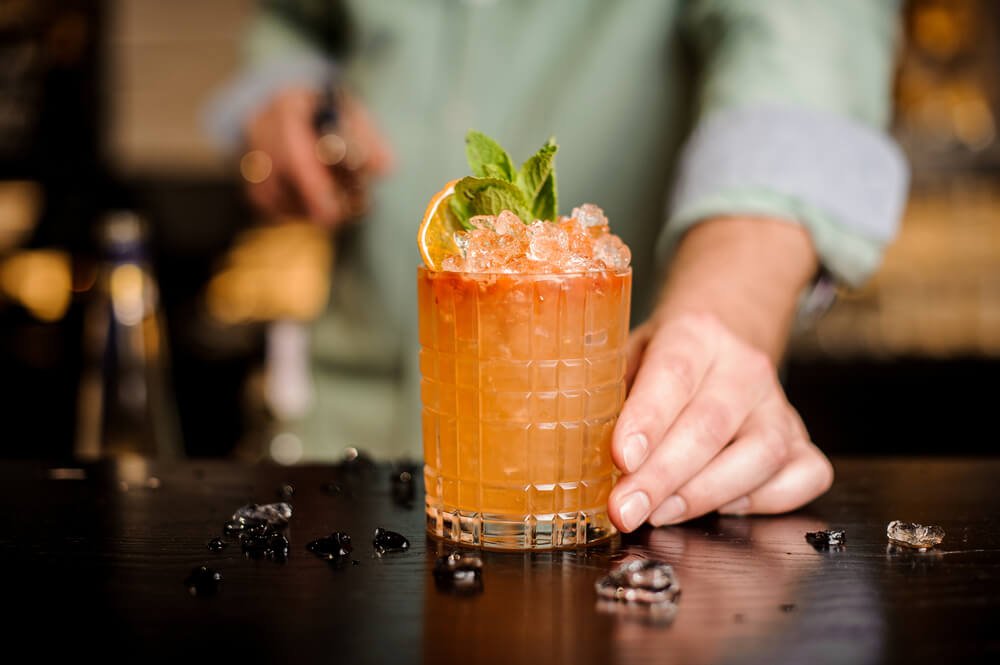
For a more relaxed evening out in Berlin, you can also find many great bars where you can sip a cocktail or a beer and stay warm.
Some of the most popular areas for an evening out are Friedrichshein, Hackescher Markt, Rosenthaler Platz, and Prenzlauer Berg.
The area around Rosenthaler Platz is famous for its many restaurants and bars like 100 Gramm Bar and Mein Haus am See.
Hackescher Markt is known for its alternative vibe and cool street art, and it’s well worth your time to visit.
A fun bar you can check out here is Eschschloraque.
Other great bars worth checking out in Berlin are the famous rooftop Monkey Bar, the classy Hildegard Bar, and the quirky, vintage-looking Bellboy Bar Berlin.
Go ice skating in one of the many rinks around the city.

Ice skating is a great winter activity to try in Berlin. The city has many ice rinks, including popular spots right in the heart of the city.
One of the most famous spots for ice skating is Eisbahn am Neptunbrunnen near Alexanderplatz, the perfect location to stop by while on a sightseeing tour (since it’s near the TV tower).
If you’re looking for a less crowded spot, you can also try Horst Dohm Ice skating rink near Wilmersdorf Stadium, which is most popular among locals.
The big ice rink is in a peaceful location, perfect if you don’t want to be in the busy city center.
Ice skating is a popular winter pastime in Berlin, so you will likely find many more rinks popping up all over the city during wintertime.
Spend some time at KaDeWe.
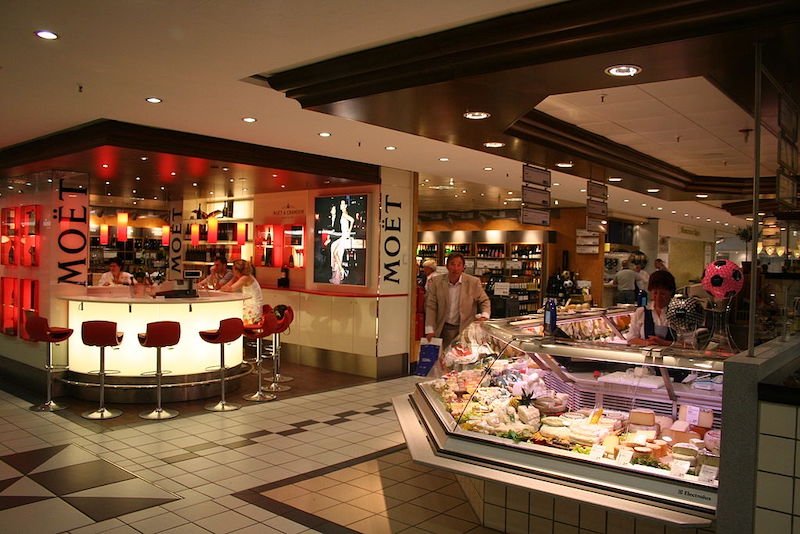
When the Berlin winter weather gets harsh, and you don’t feel like visiting any more museums, you can always check out one of Berlin’s many impressive shopping malls.
KaDeWe is probably the city’s most famous shopping mall, inaugurated in 1907.
KaDeWe stands for Kaufhaus des Westens and is among Europe’s largest and most luxurious department stores, home to high-end fashion stores as well as an impressive food hall offering a vast array of delicacies, from tasty pastries to fine wines and delicious seafood.
You could easily spend an entire afternoon in KaDeWe, shopping, staring in awe at the elegant displays, eating delicious food, and enjoying a coffee or drink.
The store was significantly damaged during World War II but was quickly rebuilt and continues to be one of the most iconic places in Berlin for both locals and foreigners.
Eat your way around the world.

As a diverse and international city, Berlin is one of the top European capitals to sample a wide range of international cuisines.
Since the city is home to so many nationalities, it shouldn’t be a surprise that it offers restaurants from nearly every country you can think of!
Middle Eastern cuisine is particularly widespread in Berlin, and you’ll find many spots to try it, from small kebab joints to charming restaurants like the Lebanese Byblos Restaurant, the Turkish Baba Pirzola, the Israeli YAFO, or the Egyptian Marooush.
Asian cuisine is also popular, from Thai to Vietnamese and Chinese. Try the trendy Cao Cao or Royals & Rice for Vietnamese, Bangkok Treffpunkt for traditional Thai, or the cozy Ho Lo Asia Restaurant in Charlottenburg for a mix of Asian dishes.
If you prefer Italian, check out Mozzarella & Pomodoro or Boccacelli am Winterfeldtplatz.
You can also take a guided food tour of Berlin to explore the city through your stomach with some expert local guides calling the shots!
Visit Berlin’s Baroque palaces.
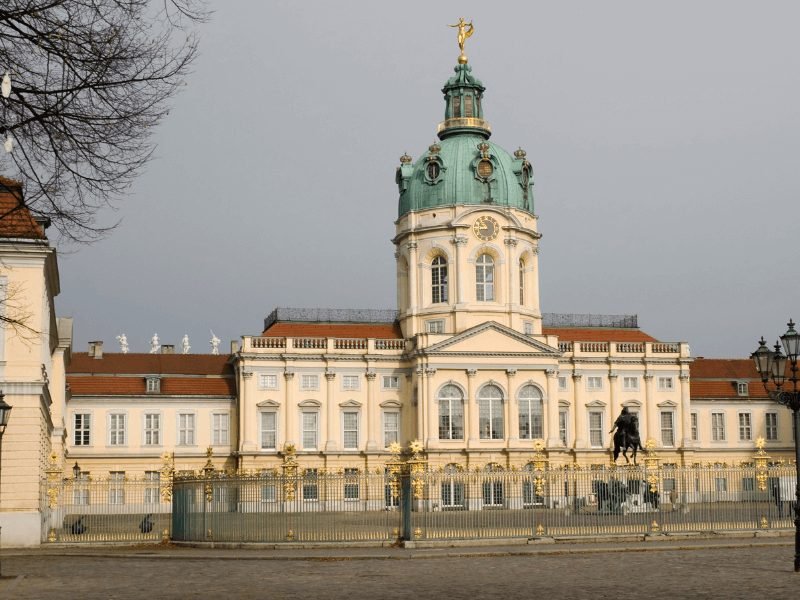
Of course, Berlin isn’t just about museums, techno parties, and international cuisine.
Despite wars and walls, the city has a long and rich history that it has preserved well, including several palaces that are open to the public, like the beloved Baroque beauties of Charlottenburg Palace and Schönhausen Palace.
Charlottenburg Palace is a must-visit for its 17th century beauty with its opulent apartments, well laid-out gardens, and a stunning collection of art.
A little further afield in the borough of Pankow, just north of Berlin, you can visit another Baroque gem, the Schönhausen Palace.
The palace used to be the residence of the German royals and has preserved its extravagant interiors beautifully, perfect to visit on a guided tour.
Despite being quite far from the center of Berlin, it’s easy to reach with public transportation in just half an hour.
Take a charming winter day trip to Potsdam.
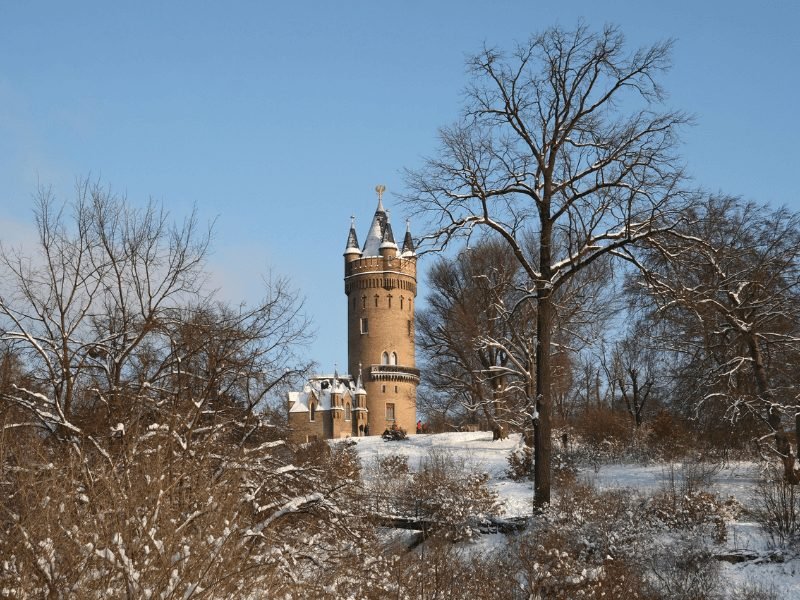
Lastly, once you’ve seen the main attractions in Berlin, you could also take a trip to nearby Potsdam to enjoy its lively winter atmosphere and visit the gorgeous palaces.
Potsdam is a small town just south of Berlin, home to the impressive Sanssouci Park and Palace, Charlottenhof Palace, and New Palace (Neues Palais).
After visiting the beautiful palaces, you can enjoy the delightful Christmas atmosphere.
Stroll around the charming Old Town and check out the lively Christmas Market in Alter Markt, where you can sip mulled wine and eat delicious seasonal treats.
Lastly, Potsdam is home to several museums. Check out the stunning art collection at Museum Barberini or visit the Filmmuseum Potsdam inside a gorgeous baroque building.
Potsdam offers plenty of attractions and you could easily spend more than one day, so plan your trip and choose the main sights you wish to visit.
You can visit independently if you want to explore the city at your own pace or you can book a guided day trip that focuses on the palaces.

Roxana is a Romanian-born freelance travel writer who has lived in Italy for over 15 years. She has a Master’s in Journalism and a Bachelor’s in Film Studies, and she studied at Università degli Studi di Roma Tre. Besides her native Romania, Roxana has lived in Rome, Lisbon, and Berlin, and she has traveled through much of Europe in search of hidden gems, history, and culture.
